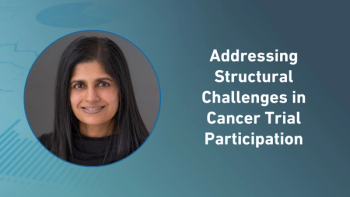
Harmonizing Data in Clinical Research
In this video interview with ACT editor Andy, Studna, Silvio Galea, chief data & analytics officer, WCG, touches on the usability of clinical technology.
In a recent video interview with Applied Clinical Trials, Silvio Galea, chief data & analytics officer, WCG, discussed the challenges in the clinical trial industry, emphasizing low awareness among both patients and providers. He highlighted operational issues, including the difficulty in identifying and engaging patients, data interoperability, and ensuring data quality. Galea stressed the importance of user experience in electronic data capture tools and the need for industry standards. Prioritizing data collection should focus on safety, efficacy, and efficiency, ensuring data quality, and avoiding workflow disruptions.
A transcript of Galea’s conversation with ACT can be found below.
ACT: Do you think decentralized data collection tools such as eConsent and electronic patient-reported outcomes (ePROs) increase patient centricity or do they create more burden by adding complexity? Why?
Galea: Yeah, I think that, obviously, the ability of having electronic data capture capabilities is important and beneficial. I do think that there are two hurdles that we need to overcome. The first one is the user experience of these applications, right? I think we as consumers living in a digital world have a particular bar to which we expect to interact with technology, and that bar from a B2C consumer perspective, has to be held in the B2B, or in the medical, or in the record collection, or in eCOA (electronic clinical outcome assessment), ePROs, and others. The expectation is that I'm interacting with it, with an application that Apple's research and the same level of integrity, user experience, speed, and feedback should be there. First of all, these technologies should be at a certain level of usability. Secondly, from the back end, we're collecting this data, we don't have yet an industry standard for how this is all collected. On the healthcare side, with Medicare, about 10 years ago, the government put forth the FHIR (Fast Healthcare Interoperability Resources) standard for how data interoperability should work. That's great from an EHR (electronic health record)-medical record perspective, but we don't necessarily have one in the life sciences space right now that we could all harmonize against, so there's a lot of work being done in the back end to take my format of data, make sure that the semantics equal your format and semantical structure, not just the syntax, but the semantics, and then make sure that I could harmonize it and present it as a unified data set. From the patient's perspective, making sure that it's something I want to use, and it's not a hurdle, and there's no barrier of me entering data in a qualitative fashion, and then on the back end, it's if the data is there, how do we bring it together so that we could measure it quickly and efficiently and not have the data harmonization collection be a white space between the milestones of the clinical life sciences space?
Newsletter
Stay current in clinical research with Applied Clinical Trials, providing expert insights, regulatory updates, and practical strategies for successful clinical trial design and execution.




